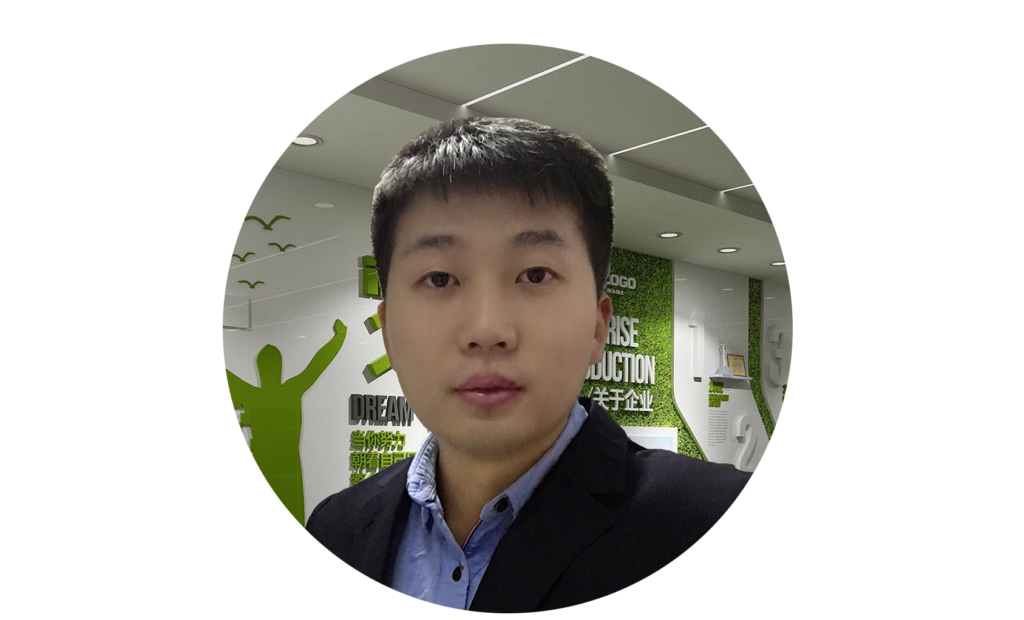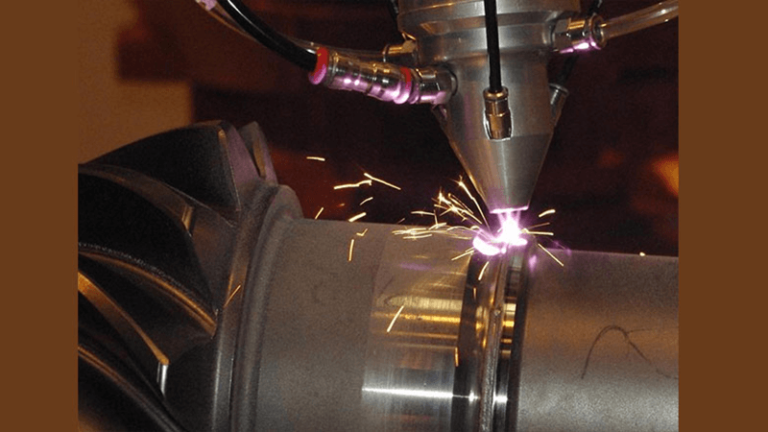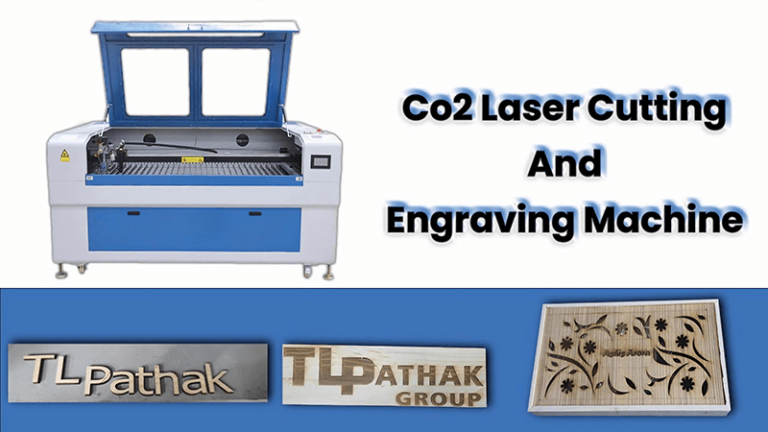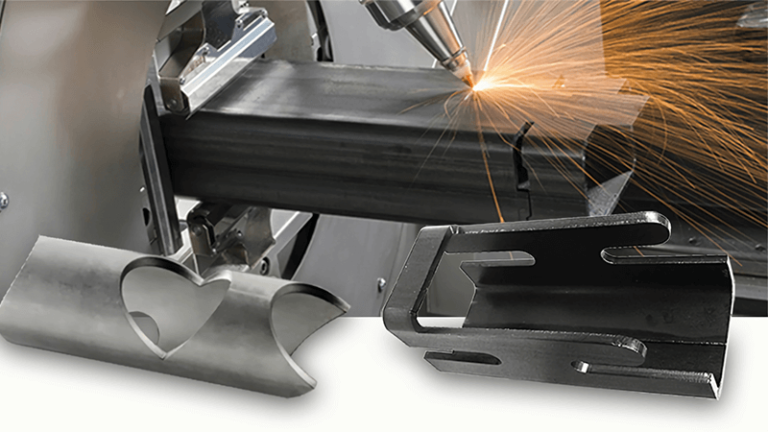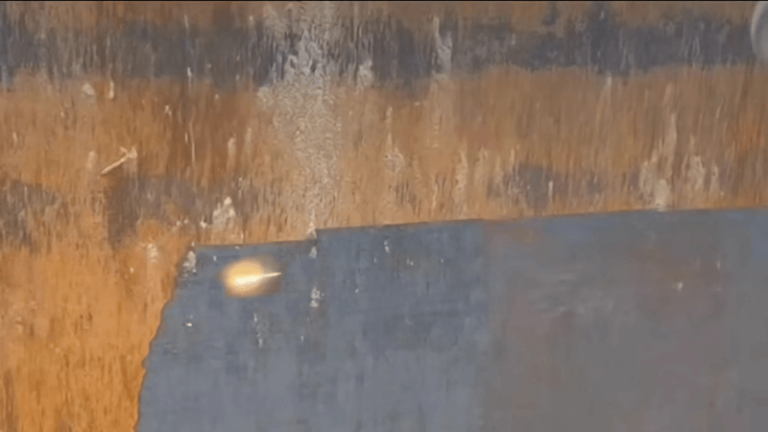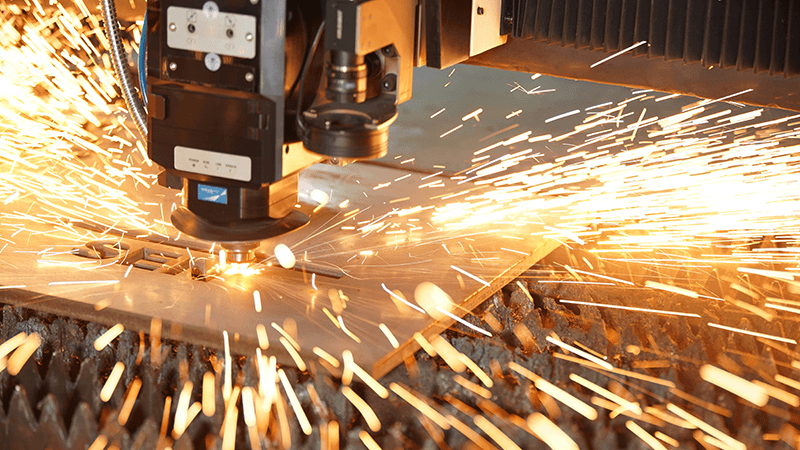
When you think of industrial manufacturing today, lasers are everywhere. They're the unsung heroes behind so many products we use every day. Whether you're cutting metals, plastics, or wood, there's a laser machine technique designed to make your job easier, faster, and more precise. But which one is best for your needs? In this blog post, I’m diving into the top 5 laser cutting techniques used in industrial settings. Let’s explore how each works and where they shine. Spoiler alert: some techniques are faster than others, and some deliver better precision depending on the material.
Each of laser cutting techniques offers unique advantages that make them suitable for different industrial applications. The choice of method often depends on factors such as material type, thickness, required precision, and production volume. By understanding these laser techniques, industries can optimize their manufacturing processes and improve product quality while reducing waste and costs.
Laser cutting has revolutionized the industrial world. But like any tool, it’s all about using the right one for the job. I know it can be overwhelming, so let me break it down for you, plain and simple. With years of experience in the field of laser machinery, I’ll guide you through the most popular cutting techniques. And by the end, you’ll know exactly which one will give your production line a competitive edge. Let’s jump right in.
CO2 Laser Cutting: The Versatile Workhorse
First on the list is CO2 laser cutting. If you’ve been around the laser industry for any length of time, you’ll know this one is a classic. CO2 lasers are incredibly versatile and can cut through materials ranging from metals to plastics, wood, and even ceramics. The technology uses a gas mixture (primarily CO2) that is excited to produce a powerful beam capable of cutting with great precision.
What makes CO2 laser cutting so effective?
The beam generated by CO2 lasers is well-suited for cutting thin to medium thickness materials. They are highly efficient in engraving as well, making them a favorite in industries like automotive manufacturing, metalworking, and signage production. With their high-speed cutting ability, CO2 lasers are not just about precision—they’re about getting the job done quickly, which is crucial in a fast-paced production environment.
Pros: Fast, efficient, and highly precise on non-metallic materials. Cons: Not ideal for very thick metals.
Want to know how CO2 lasers compare to other techniques in terms of speed? You’ll find some interesting insights on that here.
Laser machines are widely used in industrial manufacturing.True
Lasers are essential tools in various industries for cutting metals, plastics, and wood with high precision.
Laser machines are only suitable for cutting metals.False
Laser machines are versatile and can be used to cut a variety of materials, including plastics and wood.
What Are the Applications of CO₂ Laser Cutting Machines Across Different Industries?
CO₂ laser cutting machines are versatile tools utilized in various industries for precise and efficient material processing. Here’s an overview of their applications across eight key sectors:
-
Automotive Manufacturing
- Body Panel Cutting: Precision cutting of vehicle body panels, including doors and hoods, to achieve complex shapes.
- Interior Components: Cutting materials for car interiors, such as seat fabrics and dashboard plastics, ensuring components meet design specifications accurately.
-
Aerospace Sector
- Component Fabrication: Cutting aerospace-grade materials like titanium and aluminum alloys for manufacturing aircraft wings and fuselage frames.
- Composite Materials Processing: Precisely cutting high-strength composites, including carbon fiber-reinforced materials, to meet lightweight and high-performance requirements.
-
Electronics Industry
- Printed Circuit Boards (PCBs): Creating intricate micro-circuits and vias on PCBs, enhancing the performance and reliability of electronic devices.
- Enclosure Manufacturing: Cutting plastic and other materials for electronic device housings, ensuring precise and clean edges.
-
Advertising and Signage Production
- Material Cutting: Processing various advertising materials such as acrylic, PVC, and two-tone boards to create eye-catching signs, billboards, and lightboxes.
- Complex Designs: Achieving intricate patterns and lettering with smooth edges, enhancing the quality and aesthetic appeal of advertising products.
-
Machinery Manufacturing
- Metal and Non-Metal Parts: Cutting a wide range of metal materials, including different steel grades for gears and shafts, as well as engineering plastics like nylon and polyacetal for mechanical components and housings.
- High Precision: Delivering high-precision cuts that meet the stringent requirements of mechanical manufacturing processes.
-
Architectural and Decorative Industries
- Material Processing: Cutting decorative materials such as stone, tiles, and glass to create ornamental architectural elements like carved glass and custom-shaped stone pieces.
- Insulation Materials: Processing building insulation materials like foam boards with precision, enhancing both functionality and aesthetic appeal.
-
Furniture Manufacturing
- Wood and Engineered Wood Cutting: Cutting various wood types and engineered boards like MDF and particleboard for making furniture parts such as table legs and frames.
- Decorative Cutting: Engraving and decorative shaping on furniture surfaces, including leather and fabric coverings, to produce artistically appealing furniture pieces.
-
Packaging Industry
- Packaging Material Cutting: Shaping packaging materials like cardboard and corrugated paper for creating precise packaging boxes.
- Plastic Packaging: Cutting plastic films and sheets with high efficiency and accuracy, improving the quality and production speed of packaging solutions.
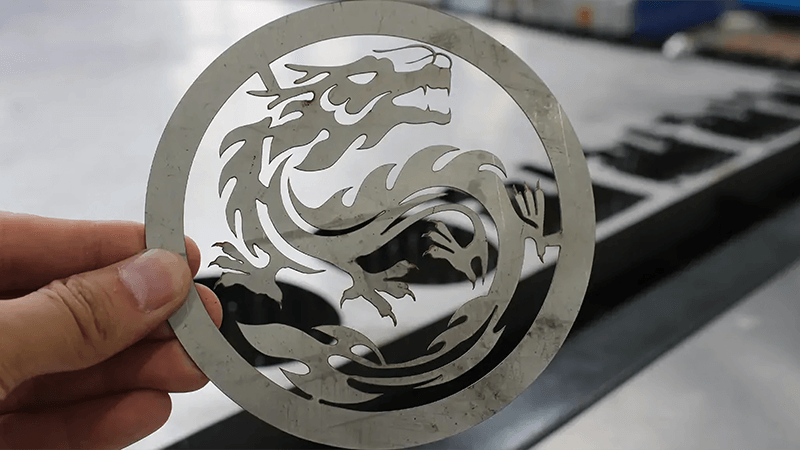
CO₂ laser cutting machines enhance manufacturing processes across these industries by providing high precision, versatility, and efficiency, thereby meeting the diverse needs of modern production environments.
How Should You Adjust CO₂ Laser Cutting Parameters for Different Materials?
When adjusting parameters for a CO₂ laser cutting machine, the first consideration should be the thickness of the material. Here's a guide for various materials and thicknesses:
| Material Category | Material Examples | Thickness | Laser Power | Cutting Speed | Assist Gas Pressure | Notes |
|---|---|---|---|---|---|---|
| Thin Non-Metallic | Plastics | < 5 mm | 100W - 300W | 30 cm/min - 100 cm/min | 0.2 MPa - 0.4 MPa (Compressed Air) | Lower power sufficient for melting/vaporizing |
| Thick Non-Metallic | Wood, Ceramic | > 10 mm | 500W - 1000W | 2 cm/min - 10 cm/min | 0.4 MPa - 0.8 MPa | Higher power ensures material penetration |
| Soft Materials | Leather, Fabrics | Varies | 100W - 300W | 30 cm/min - 60 cm/min | 0.2 MPa - 0.4 MPa (Compressed Air) | Prevents material deformation |
| Transparent/High-Gloss | Acrylic | Varies | 200W - 500W | 10 cm/min - 30 cm/min | 0.3 MPa - 0.6 MPa (Nitrogen) | Avoids surface scorching or cracking |
Tips for Adjusting Parameters:
- Material Thickness: Always prioritize the thickness of the material when setting laser power and cutting speed.
- Material Nature: Consider the inherent properties (e.g., softness, transparency) to adjust assist gas type and pressure accordingly.
- Testing: It's advisable to perform test cuts to fine-tune parameters for optimal results based on specific material batches and machine conditions.
Laser cutting technology is outdated and no longer used in modern manufacturing.False
Laser cutting remains a critical and highly efficient tool in modern manufacturing, offering speed, precision, and flexibility.
Laser machines can make industrial manufacturing easier, faster, and more precise.True
Laser technology enhances manufacturing processes by offering speed and high precision in cutting various materials.
Fiber Laser Cutting: The Powerhouse for Metal
When you need something that can handle heavy-duty tasks, fiber laser cutting is the go-to choice. Fiber lasers are known for their ability to cut through thick metals with ease, making them perfect for industries like aerospace, automotive, and heavy manufacturing. These lasers work by focusing light through a fiber-optic cable, which significantly improves beam quality and intensity.
The high-intensity beam allows fiber lasers to make precise cuts in thicker materials faster than CO2 lasers. This makes them ideal for cutting through stainless steel, titanium, and other tough materials.
Why choose fiber laser cutting?
The main selling point here is speed combined with high power. You get faster cutting with minimal heat impact, meaning there's less risk of material distortion. Fiber lasers are also incredibly energy-efficient, which is a significant cost-saving factor for long-term industrial use.
Pros: Faster than CO2 lasers for metals, energy-efficient, and precise. Cons: Higher upfront costs for machinery.
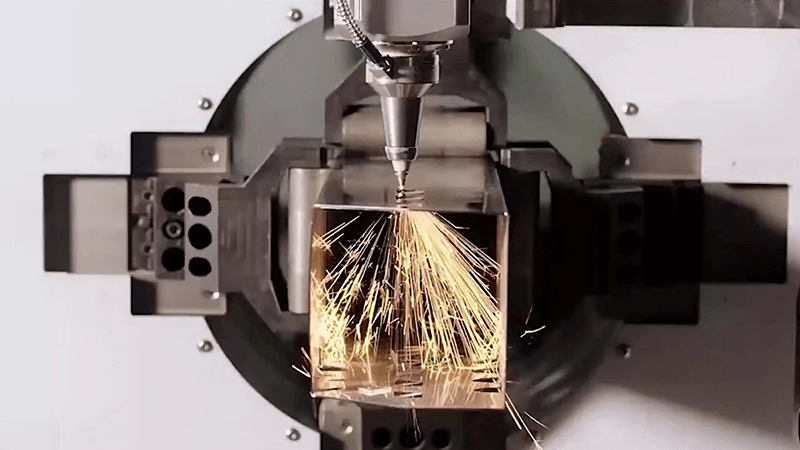
Applications of Fiber Laser Cutting Machines
- Automotive Industry
Fiber laser cutting machines play a crucial role in the automotive industry, enhancing production efficiency and product quality. Their high precision and versatility make them ideal for manufacturing complex automotive components and optimizing production processes.
| Application | Description |
|---|---|
| Component Production | - Intricate Part Manufacturing: Fiber lasers enable precise cuts for complex components like exhaust systems, engine brackets, suspension parts, and transmission gears, ensuring each part meets stringent design specifications. |
| - Hydro-Formed Parts: High precision cutting maintains structural integrity without deforming materials. | |
| - Airbag Fabrics: Seamlessly cuts fabric materials used in airbags, preventing fraying and ensuring clean edges critical for safety applications. | |
| Prototyping | - Rapid Development: Facilitates quick creation and iteration of parts, reducing delays and costs associated with traditional tooling methods. |
| - Customization: Allows for tailored designs and faster time-to-market for new vehicle models and components. | |
| Weight Reduction & Material Efficiency | - Minimized Waste: Optimizes material usage through precise cutting patterns, supporting the automotive industry's push towards lightweighting. |
| - Fuel Efficiency: Use of lighter materials contributes to the development of more fuel-efficient vehicles, aligning with global sustainability goals. | |
| Enhanced Production Speed | - High Throughput: Operates at high speeds, significantly increasing production rates to meet large-scale manufacturing demands. |
- Aerospace Industry
In the aerospace sector, fiber laser cutting machines deliver exceptional precision and reliability, meeting the demands for manufacturing highly complex and high-performance aerospace components, ensuring the safety and efficiency of aircraft.
| Application | Description |
|---|---|
| Complex Shape Cutting | - Aircraft Components: Essential for cutting intricate designs in turbine blades, wing structures, and fuselage sections. |
| - Precision Engineering: Ensures each part fits perfectly within the assembly, maintaining integrity and safety. | |
| Handling High-Strength Alloys | - Material Compatibility: Effectively cuts high-strength and temperature-resistant alloys like titanium and Inconel, which are fundamental in aerospace applications. |
| - Durability and Performance: Ensures precise fabrication of components that withstand extreme conditions. | |
| Quality Control and Consistency | - Minimal Heat-Affected Zone (HAZ): Reduces material deformation, adhering to strict aerospace quality standards. |
| - Repeatability: Consistent cutting quality across batches ensures reliability and safety. | |
| Cost Efficiency | - Reduced Waste and Rework: Lowers error rates and the need for rework, cutting costs and improving efficiency in the aerospace supply chain. |
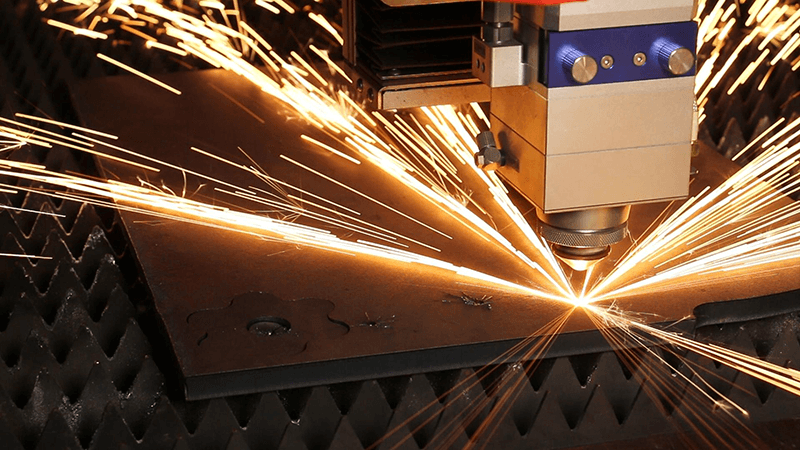
- Medical Devices
Fiber laser cutting machines provide highly precise and reliable solutions in medical device manufacturing, ensuring the quality and safety of medical equipment and implants, thereby advancing medical technology.
| Application | Description |
|---|---|
| Precision Cutting for Surgical Instruments | - High Accuracy: Produces surgical instruments with exact specifications, ensuring reliability and performance during medical procedures. |
| - Material Versatility: Handles materials such as stainless steel and titanium, known for biocompatibility and strength. | |
| Manufacturing Implants | - Custom Implants: Creates implants tailored to individual patient anatomies, enhancing the effectiveness of medical treatments. |
| - Surface Quality: Clean cuts reduce the need for additional finishing processes, maintaining surface integrity. | |
| Production of Small Components | - Micro-Fabrication: Creates extremely small and intricate parts necessary for advanced medical devices. |
| - Efficiency in Assembly: Precise components streamline the assembly process, reducing manufacturing time and costs. | |
| Maintaining Sterility and Cleanliness | - Non-Contact Cutting: Minimizes contamination risks, crucial for maintaining the sterility required in medical applications. |
| - Clean Edges: Reduces infection risks by avoiding mechanical stress during cutting, enhancing patient safety. |
- Manufacturing and Heavy Machinery
In the manufacturing and heavy machinery industry, fiber laser cutting machines optimize production processes through efficient and precise cutting capabilities, enhancing product quality and operational efficiency to meet the demand for complex and customized parts.
| Application | Description |
|---|---|
| Sheet Metal Processing | - High-Speed Fabrication: Produces machine parts with high-speed, high-quality cuts essential for manufacturing heavy machinery components. |
| - Versatility in Materials: Handles various metals and alloys, enhancing manufacturing flexibility. | |
| Production of Custom Equipment | - Rapid Customization: Quickly produces custom parts to meet specific machinery requirements. |
| - Operational Efficiency: Custom parts tailored to specific machinery needs improve overall operational efficiency and machinery performance. | |
| Structural Components | - Durable Parts: Produces precise structural components vital for machinery integrity and longevity. |
| - Complex Geometries: Enables innovative machinery designs with intricate shapes that traditional cutting methods may struggle to achieve. | |
| Cost and Time Savings | - Reduced Manufacturing Time: Decreases production times, leading to faster turnaround on orders and reduced manufacturing costs. |
| - Energy Efficiency: Consumes less energy compared to traditional cutting methods, lowering operational costs. |
- Electronics Industry
Fiber laser cutting machines offer high-precision and efficient solutions in the electronics industry, addressing the needs for micro-cutting and multi-layer material handling to ensure the performance and reliability of electronic products.
| Application | Description |
|---|---|
| Micro-Cutting for Circuit Boards | - High Precision: Cuts delicate components like printed circuit boards (PCBs) with micron-level accuracy. |
| - Minimal Damage: Reduces the risk of damaging sensitive electronic components during the cutting process. | |
| Material Versatility | - Diverse Materials: Works on copper, aluminum, plastics, and more without compromising cut quality. |
| - Layered Materials: Effectively cuts multi-layered materials used in advanced electronics, maintaining the integrity of each layer. | |
| Rapid Prototyping and Production | - Quick Iterations: Allows for rapid prototyping and design improvements. |
| - Scalability: Easily scales from small to large-scale manufacturing to meet the growing demands of the electronics industry. | |
| Enhanced Product Quality | - Consistent Quality: Ensures high-quality cuts for reliable electronic products. |
| - Surface Finish: Provides smooth surface finishes, reducing the need for additional processing and enhancing the aesthetic and functional quality of electronic components. |
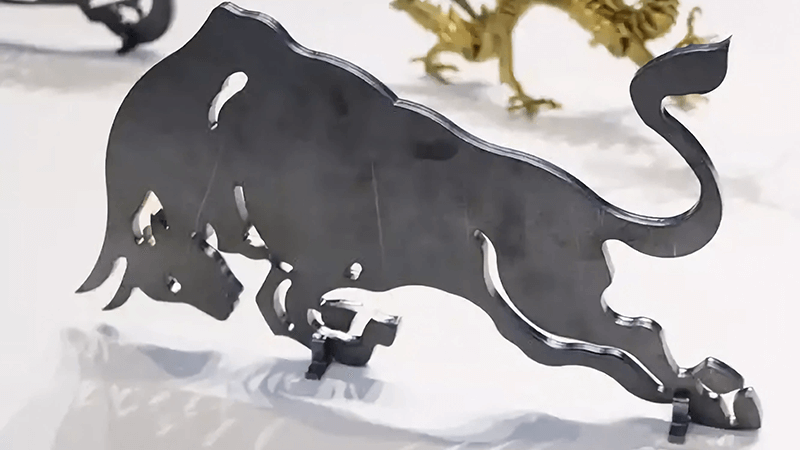
- Construction and Heavy Equipment
In the construction and heavy equipment industry, fiber laser cutting machines support the manufacturing and maintenance of construction machinery parts, ensuring the reliability and long-term performance of equipment through precise and efficient cutting.
| Application | Description |
|---|---|
| Machinery Parts Fabrication | - Durable Components: Produces robust parts for construction machinery such as excavators, bulldozers, and cranes, ensuring reliability and performance in demanding environments. |
| - Complex Designs: Enhances functionality with intricate and detailed components. | |
| Production of Repair Parts | - On-Demand Manufacturing: Rapidly produces replacement parts, reducing machinery downtime. |
| - Cost-Effective Repairs: Lowers maintenance and repair costs by producing parts as needed, avoiding the need for extensive inventory. | |
| Structural Steel Cutting | - Precision Cutting of Beams and Columns: Ensures the integrity and stability of construction frameworks through high-precision cutting. |
| - Customization: Meets specific architectural and engineering requirements with customized steel structures. | |
| Safety and Compliance | - Adherence to Standards: Ensures that construction components meet stringent safety and regulatory standards through precise cutting. |
| - Consistency in Production: Reduces the risk of structural failures by maintaining consistent cutting quality, enhancing overall construction safety. |
- Signage and Advertising
Fiber laser cutting machines provide highly customizable and intricate design solutions in the signage and advertising industry, enhancing the visual impact and production efficiency to meet diverse market demands.
| Application | Description |
|---|---|
| Custom Design Creation | - High Customization: Creates highly customized signs, logos, and promotional materials with intricate details and unique designs. |
| - Versatile Materials: Cuts acrylic, metal, wood, plastics, and more, allowing for creative and varied advertising solutions. | |
| Decorative Applications | - Intricate Patterns: Produces complex and decorative patterns that enhance the visual appeal of signs and advertisements. |
| - 3D Effects: Engraves or cuts layers to create three-dimensional effects, adding depth and sophistication to signage. | |
| Efficient Production Processes | - Fast Turnaround: Facilitates quick production cycles, enabling timely delivery of advertising materials to meet campaign deadlines. |
| - Scalability: Efficiently handles both small and large production runs, making it suitable for various advertising projects, from small business signs to large-scale billboards. | |
| Durability and Quality | - Weather-Resistant Cuts: Ensures outdoor signage materials are durable and weather-resistant, maintaining quality and appearance over time. |
| - Consistent Quality: High precision cutting ensures consistent quality across all signage products, enhancing brand reputation and visibility. |
- Kitchenware Industry
Fiber laser cutting machines offer high-precision and high-quality cutting solutions in the kitchenware industry, enhancing design flexibility and production efficiency to meet the market's demand for functional and aesthetically pleasing products.
| Application | Description |
|---|---|
| Precision Cutting of Stainless Steel | - High-Quality Finishes: Efficiently cuts thin stainless steel sheets, producing kitchenware with smooth and precise edges that meet high aesthetic and functional standards. |
| - Complex Shapes: Creates intricate designs in kitchen utensils, cookware, and appliances, enhancing both functionality and visual appeal. | |
| Customization and Design Flexibility | - Tailored Designs: Produces customized kitchenware designs to meet specific market demands or consumer preferences, allowing for unique product offerings. |
| - Innovative Features: Enables the incorporation of ergonomic handles, decorative patterns, and integrated functionalities in kitchen products. | |
| Efficiency and Cost-Effectiveness | - Reduced Production Time: Accelerates the production process, allowing for faster turnaround times and increased output. |
| - Material Savings: Minimizes material waste through precise cutting, reducing costs and promoting sustainable manufacturing practices. | |
| Enhanced Product Durability | - Consistent Quality: Ensures uniformity and durability in each kitchenware piece, meeting the rigorous demands of everyday use. |
| - Hygienic Production: Clean cuts and minimal mechanical contact reduce the risk of contamination, ensuring kitchenware is safe and hygienic for consumer use. |
- Jewelry Manufacturing
Fiber laser cutting machines achieve highly detailed engraving and cutting in jewelry manufacturing, facilitating personalized designs and efficient mass production to meet the demand for unique and high-quality jewelry pieces.
| Application | Description |
|---|---|
| Intricate Engraving and Shaping | - Detailed Designs: Engraves and shapes precious metals such as gold, silver, and platinum with unparalleled detail, allowing for the creation of intricate jewelry pieces. |
| - Customization: Facilitates personalized jewelry designs, including custom engravings, unique patterns, and bespoke shapes tailored to individual customer preferences. | |
| Precision and Consistency | - High Accuracy: Ensures each jewelry piece meets exact specifications, maintaining consistency in design and quality across production batches. |
| - Repeatability: Consistently replicates complex designs, which is essential for mass-produced jewelry lines while maintaining high aesthetic standards. | |
| Material Versatility | - Wide Range of Metals: Works with various metals used in jewelry making, including hard and soft metals, without compromising the integrity or appearance of the materials. |
| - Non-Metal Materials: Can also cut and engrave non-metal materials such as gemstones, glass, and certain plastics, expanding the range of materials used in jewelry design. | |
| Efficiency and Cost Savings | - Reduced Labor Costs: Automates the cutting and engraving processes, reducing the need for manual labor, lowering production costs, and increasing efficiency. |
| - Faster Production Cycles: The high speed of fiber laser machines accelerates the production process, enabling quicker turnaround times for custom and bulk jewelry orders. |
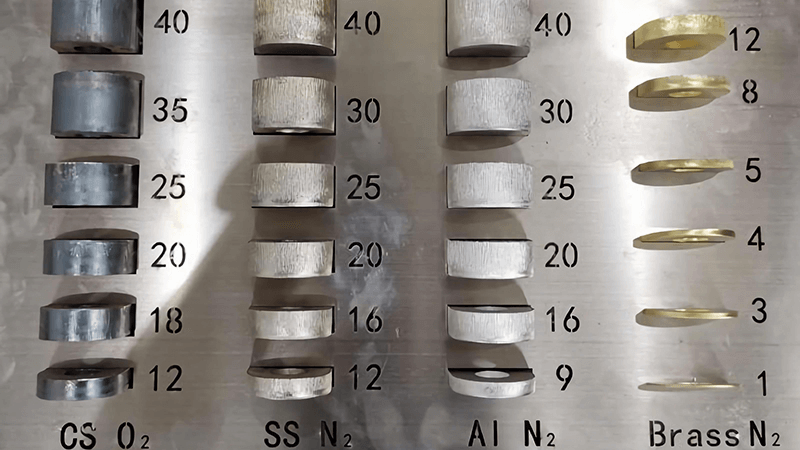
How Should You Adjust Fiber Laser Cutting Parameters for Different Materials?
Here’s a summary of the cutting capabilities for fiber laser cutting machines from 1kW to 12kW, including cutting thickness, cutting speed, auxiliary gases, and important considerations for different materials.
- Stainless Steel (SS)
| Power | Cutting Thickness | Cutting Speed (mm/min) | Auxiliary Gas | Key Considerations |
|---|---|---|---|---|
| 1kW | ≤ 6mm | 1000–1500 | Nitrogen (N₂) | Suitable for thin sheets. Avoid overheating and edge burning. |
| 2kW | ≤ 10mm | 1500–2500 | Nitrogen (N₂) | Medium power, suitable for medium-thickness materials, offers faster cutting speed. |
| 3kW | ≤ 15mm | 2500–4000 | Nitrogen (N₂) or Oxygen (O₂) | Higher cutting speed and efficiency for thicker sheets. |
| 4-6kW | ≤ 20mm | 4000–5000 | Oxygen (O₂) | Ideal for cutting thick stainless steel. Oxygen assists in faster cutting but may leave a rough edge. |
| 8-12kW | ≤ 30mm | 5000–8000 | Oxygen (O₂) | Maximum efficiency for cutting very thick stainless steel, good for industrial applications. |
- Mild Steel (Carbon Steel)
| Power | Cutting Thickness | Cutting Speed (mm/min) | Auxiliary Gas | Key Considerations |
|---|---|---|---|---|
| 1kW | ≤ 6mm | 1200–1800 | Oxygen (O₂) | Suitable for thinner carbon steel sheets. Oxygen provides cleaner cuts. |
| 2kW | ≤ 12mm | 1800–2800 | Oxygen (O₂) | Faster cutting for medium-thickness sheets. High oxygen pressure can improve speed. |
| 3kW | ≤ 18mm | 2800–4500 | Oxygen (O₂) | Higher power for thicker cuts, oxygen speeds up the process. |
| 4-6kW | ≤ 20mm | 4500–6000 | Oxygen (O₂) | High speed and efficiency for thicker materials. Oxygen helps with faster cutting, but attention to edge quality is needed. |
| 8-12kW | ≤ 25-30mm | 6000–8000 | Oxygen (O₂) | Best suited for very thick materials, high-speed cutting. Oxygen provides excellent cutting speed, but may cause oxidation. |
- Aluminum
| Power | Cutting Thickness | Cutting Speed (mm/min) | Auxiliary Gas | Key Considerations |
|---|---|---|---|---|
| 1kW | ≤ 3mm | 800–1200 | Nitrogen (N₂) | Aluminum requires high-quality focusing optics due to its reflective nature. |
| 2kW | ≤ 6mm | 1200–2000 | Nitrogen (N₂) | Requires precise control to avoid oxidation. Nitrogen is recommended for a cleaner cut. |
| 3kW | ≤ 8mm | 2000–3000 | Nitrogen (N₂) | Higher speed, maintain good focus and gas pressure for clean cuts. |
| 4-6kW | ≤ 12mm | 3000–4000 | Nitrogen (N₂) | High power allows efficient cutting of thicker aluminum sheets, but requires good management of heat and gas flow. |
| 8-12kW | ≤ 15mm | 4000–6000 | Nitrogen (N₂) | Aluminum with very high power requires stable gas pressure to avoid excessive oxidation. |
- Copper
| Power | Cutting Thickness | Cutting Speed (mm/min) | Auxiliary Gas | Key Considerations |
|---|---|---|---|---|
| 1kW | ≤ 1mm | 400–600 | Oxygen (O₂) | Copper is highly reflective and difficult to cut with low power; oxygen assists cutting efficiency. |
| 2kW | ≤ 3mm | 600–900 | Oxygen (O₂) | Requires high beam focus and oxygen to improve cutting speed. |
| 3kW | ≤ 5mm | 900–1500 | Oxygen (O₂) | Higher power allows for better penetration, but copper's reflectivity requires precision. |
| 4-6kW | ≤ 6mm | 1500–2000 | Oxygen (O₂) | Higher power provides good results for thicker copper, but requires optimized oxygen flow to avoid oxidation. |
| 8-12kW | ≤ 8mm | 2000–3000 | Oxygen (O₂) | Excellent for cutting thicker copper, with careful gas and heat management to prevent burning. |
- Brass
| Power | Cutting Thickness | Cutting Speed (mm/min) | Auxiliary Gas | Key Considerations |
|---|---|---|---|---|
| 1kW | ≤ 1mm | 400–600 | Oxygen (O₂) | Brass has high reflectivity; oxygen is used for better absorption of the laser beam. |
| 2kW | ≤ 3mm | 600–1000 | Oxygen (O₂) | Properly focused laser is key to cutting brass cleanly. Oxygen is ideal for cutting. |
| 3kW | ≤ 4mm | 1000–1500 | Oxygen (O₂) | Oxygen provides better cutting speed for thicker brass materials. |
| 4-6kW | ≤ 6mm | 1500–2000 | Oxygen (O₂) | Higher power needed for thicker sheets. Ensure clean and controlled cutting parameters. |
| 8-12kW | ≤ 8mm | 2000–3000 | Oxygen (O₂) | High power allows thicker brass to be cut efficiently but requires attention to gas flow and oxidation. |
Key Points to Consider:
- Material Reflectivity: Materials like copper and brass have high reflectivity, which can make them difficult to cut with lower-power lasers. Higher-power lasers (4kW and above) work better for such metals.
- Heat Management: Thicker materials, especially metals like stainless steel, need more power and heat management. Ensure proper cooling and gas pressure to avoid material deformation.
- Gas Type: The choice of auxiliary gas greatly influences the cutting process. Oxygen provides faster cutting speeds and cleaner edges for materials like mild steel, but nitrogen offers cleaner cuts without oxidation, especially for stainless steel and aluminum.
- Cutting Speed: Higher power lasers allow for faster cutting speeds, but the material type and thickness must always be matched with the right cutting parameters.
- Edge Quality: Higher cutting speeds can sometimes lead to rough edges, especially when using oxygen as the cutting gas for materials like stainless steel and mild steel.
The choice of laser machine depends on the material being worked with.True
Different laser technologies are optimized for different materials, making it important to choose the right machine for specific needs.
Laser cutting is only useful for large-scale manufacturing operations.False
Laser cutting can be beneficial to both small and large-scale manufacturing, offering precision and efficiency across different production sizes.
Neodymium (Nd): YAG Laser Cutting: Precision at Its Best
When it comes to precision cutting, Neodymium (Nd): YAG lasers are hard to beat. Nd:YAG lasers are often the weapon of choice for jobs requiring extreme accuracy and control. They use a solid-state laser, which can emit light in a very focused beam, allowing for intricate cuts in materials like metal, glass, and even some ceramics.
What’s really impressive about Nd:YAG lasers is their ability to cut very fine features on highly reflective materials, such as gold and silver. This makes them the go-to choice for industries like jewelry making, medical devices, and electronics.
Why should you consider Nd:YAG laser cutting?
If your work demands ultra-fine precision—think microfabrication or delicate engraving—this is your solution. Nd:YAG lasers provide pinpoint accuracy without the risk of warping or damaging the material.
Pros: Unmatched precision, great for reflective materials. Cons: Slower than other lasers, making it less suited for mass production.
Want to see a detailed comparison of Nd:YAG lasers versus other types for precision tasks? Take a look at this comparison article.
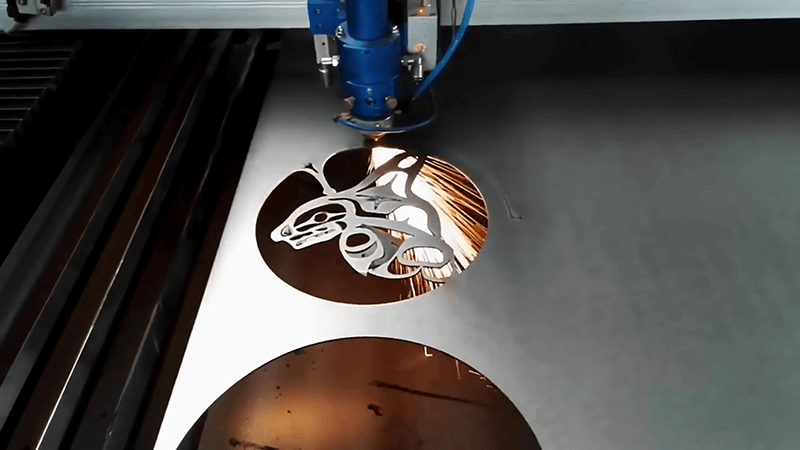
Ultrafast Laser Cutting: Cutting-Edge Technology for High-Speed Jobs
This one’s a game-changer. Ultrafast laser cutting refers to lasers that use extremely short pulses to cut materials. These lasers are typically femtosecond or picosecond lasers, and their ability to deliver incredibly fast and precise cuts is what sets them apart.
What makes ultrafast lasers so unique is that the energy is delivered in extremely short bursts, minimizing heat buildup. This makes them ideal for sensitive materials, such as semiconductors, thin films, and advanced medical devices. You won’t see any molten material or scorching edges here—just clean, accurate cuts every time.
Why should you care about ultrafast laser cutting?
If you’re working with very fine materials or need super-high precision without thermal distortion, this technique is the future. The speed and accuracy it offers make it perfect for the high-tech industries where every micron counts.
Pros: Extremely precise, no thermal damage, ideal for sensitive materials. Cons: Expensive equipment, slower for thicker materials.
Want to learn more about the technology behind ultrafast laser cutting? Check out this deep dive.
Waterjet Laser Cutting: Combining Power and Precision
While not purely a laser, waterjet laser cutting is a hybrid technique worth mentioning. This process combines the precision of laser cutting with the power of a high-pressure water stream. A laser beam is used to guide the waterjet, which can cut through thicker materials that might be too tough for other laser cutting methods.
Waterjet laser cutting is great for cutting materials that might react poorly to heat, like rubber, composites, and certain plastics. It also excels at cutting thicker metals like aluminum or copper, which can be challenging for traditional CO2 lasers.
Why use waterjet laser cutting?
If your material is heat-sensitive or you need to cut through very thick material, waterjet cutting is your best bet. Plus, it doesn’t leave behind any heat-affected zones, which is an added bonus for certain sensitive industries.
Pros: Perfect for heat-sensitive materials, can handle thicker cuts. Cons: Slower than other laser cutting techniques.
To explore the specifics of waterjet laser cutting and how it compares to other methods, check out this detailed guide.
Conclusion: Choosing the Right Laser Cutting Technique for Your Business
Now that we’ve covered the top 5 laser cutting techniques, it’s clear that there’s no one-size-fits-all solution. Whether you’re cutting through thick metals, delicate materials, or need precision that’s out of this world, there’s a laser technique that will fit your needs.
As a sales engineer at Kirin Laser, I’ve worked with countless manufacturers to help them find the right laser solution. Understanding the differences between CO2, fiber, Nd:YAG, ultrafast, and waterjet lasers is the first step. The next is to figure out which one will give your production line the speed, efficiency, and precision it needs.
Want to learn more about how our machines can boost your production? Feel free to reach out. Let’s laser-focus on getting your business the tools it deserves.
And if you’re unsure which technique is best for your needs, don't hesitate to contact me directly. I’m always happy to help businesses like yours cut through the noise and find the perfect laser solution.
References:
- " Top Features to Look for in a Laser Machine to Cut Metal?", from Kirin Laser.
- "Key Benefits of Using a Cutter Laser Machine in Manufacturing", from Kirin Laser.
- "Tube Cutting Lasers: Innovations and Applications in 2025", from Kirinn Laser.
- "The Ultimate Guide to Cutting with Laser: Applications and Benefits?", from Kirin Laser.
- "Why Choose a Laser Cutting Machine for Steel?", from Kirin Laser.
- "The Efficiency of CO2 Laser Cutting Metal in Modern Fabrication?", from Kirin Laser.
- "Top 8 Industrial Applications Of Fiber Laser Cutting Explained", from LTPL.
- "Laser Cutting Applications: 27 Industry Uses with Examples", from Accurl.

